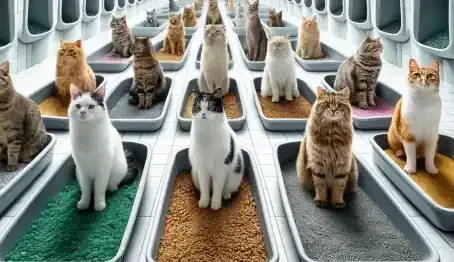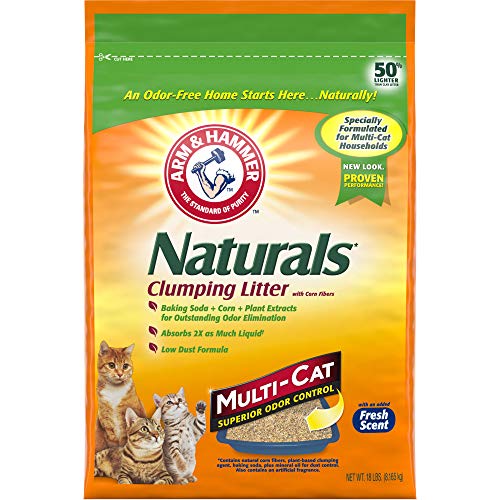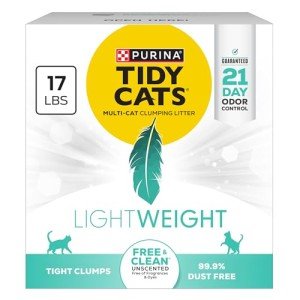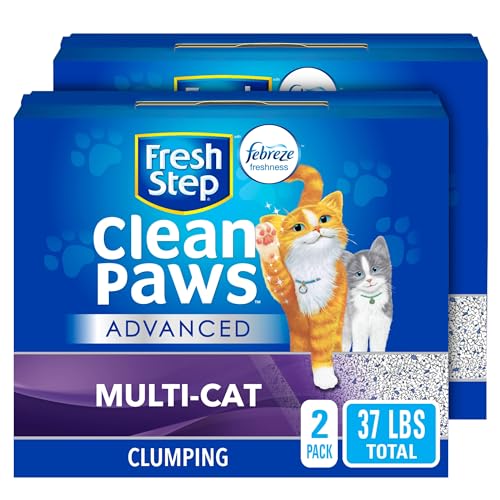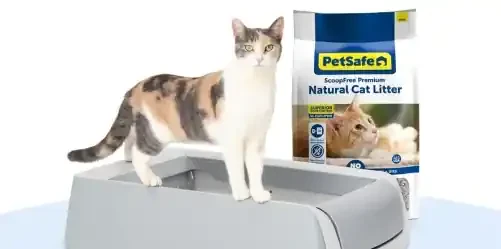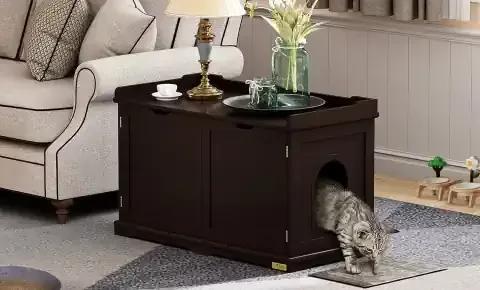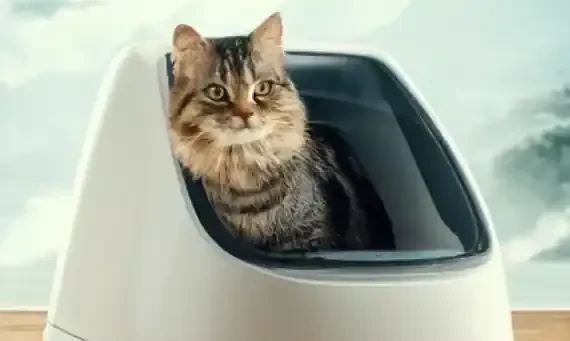Introduction
The Significance of Choosing the Right Cat Litter
Caring for a cat involves numerous decisions, and among the most crucial is choosing the right cat litter. While it might seem like a simple matter, the type of litter you select can significantly impact your cat's comfort, your home's cleanliness, and even the environment. Understanding the importance of this decision is paramount for any cat owner.
Cat litter serves as more than just a place for your feline friend to do their business; it also plays a vital role in odor control, moisture absorption, and ease of cleaning. Moreover, since cats are meticulous creatures known for their hygiene habits, providing them with a suitable litter is essential for their overall well-being and happiness.
Beyond the cat's well-being, the choice of litter also directly affects your household environment. The right litter can help keep your home odor-free, minimize tracking, and make scooping and cleaning a breeze. Conversely, the wrong choice can result in unpleasant odors permeating your living space, excessive mess, and frustration in maintaining cleanliness.
Furthermore, considering the environmental impact of cat litter is increasingly crucial in today's world. Traditional clay litters, for example, often contain non-biodegradable materials that contribute to landfill waste. Opting for eco-friendly alternatives can mitigate these environmental concerns while still meeting your cat's needs.
Overview of Factors to Consider When Selecting Cat Litter
Choosing the best cat litter involves navigating through a myriad of options, each with its own set of pros and cons. Factors such as clumping ability, odor control, dust levels, tracking, environmental impact, and your cat's preferences all come into play. By carefully considering these factors, you can find the perfect litter that meets both your cat's needs and your household requirements.
In this comprehensive guide, we will delve into the various types of cat litter available, discuss the factors to consider when making your selection, provide tips for choosing the right litter, address common concerns, and ultimately empower you to make an informed decision that enhances both your cat's quality of life and your living environment. Let's embark on this journey to discover the ultimate guide to choosing the best cat litter.
Types of Cat Litter
Clumping Cat Litter
Clumping cat litter is one of the most popular choices among cat owners for its convenience and effectiveness. This type of litter forms solid clumps when it comes into contact with moisture, making it easy to scoop out waste without having to replace the entire litter box. Here's a closer look at what makes clumping cat litter a preferred option:
Description and Benefits: Clumping cat litter typically consists of granules made from materials such as clay, silica gel, or plant-based ingredients. When your cat urinates, the litter forms tight clumps around the waste, which can be easily scooped out using a litter scoop. This not only helps keep the litter box clean but also extends the life of the litter, as only the soiled clumps need to be removed.
Best Use Cases: Clumping cat litter is ideal for households with one or multiple cats, as it efficiently traps and eliminates odors associated with urine and feces. It's particularly beneficial for busy cat owners who may not have the time for frequent litter box cleanings, as clumping litter allows for quick and easy waste removal.
Popular Brands and Options: There is a wide range of clumping cat litters available on the market, each offering unique features and benefits. Some popular brands include Tidy Cats, Arm & Hammer, Dr. Elsey's, and World's Best Cat Litter. Additionally, clumping litters come in various formulations, such as scented or unscented, lightweight, and dust-free options, allowing you to choose one that suits your preferences and your cat's needs.
Non-Clumping Cat Litter
Non-clumping cat litter, also known as traditional or absorbent litter, is another common choice for cat owners. Unlike clumping litter, this type of litter absorbs moisture without forming solid clumps, requiring more frequent complete litter changes. Let's explore the characteristics and benefits of non-clumping cat litter:
Description and Benefits: Non-clumping cat litter is typically made from materials like clay, recycled paper, or wood shavings. When your cat urinates, the litter absorbs the liquid, but instead of forming clumps, it remains as a saturated mass. While it may require more frequent litter box cleanings compared to clumping litter, non-clumping litter often offers superior odor control and can be less expensive.
Best Use Cases: Non-clumping cat litter is suitable for single-cat households or those with cats that have sensitive paws and may prefer softer litter. It's also a good option for kittens, elderly cats, or cats recovering from surgery, as it poses less risk of ingestion compared to clumping litter, which can expand in the stomach if ingested.
Popular Brands and Options: Many well-known brands offer non-clumping cat litters, including Purina, Fresh Step, and Yesterday's News. These litters may come in scented or unscented varieties, as well as different textures and formulations to meet the needs of various cat owners and their feline companions.
Crystal Cat Litter
Crystal cat litter, also referred to as silica gel litter, is a relatively newer option on the market that has gained popularity for its excellent moisture absorption and odor control properties. Here's what you need to know about crystal cat litter:
Description and Benefits: Crystal cat litter is composed of silica gel granules, which are highly absorbent and effectively trap moisture and odors. The silica gel crystals work by absorbing urine and drying out solid waste, inhibiting bacterial growth and minimizing unpleasant smells. Additionally, crystal litter tends to be less dusty than traditional clay litters, making it a cleaner option for both cats and their owners.
Best Use Cases: Crystal cat litter is suitable for households with one or multiple cats, especially those seeking superior odor control and minimal maintenance. It's also an excellent choice for busy cat owners who may appreciate the extended time between litter changes that crystal litter provides. Additionally, some cats prefer the texture of crystal litter over other types, making it a preferred option for finicky felines.
Popular Brands and Options: Several brands offer crystal cat litter, such as Fresh Step Crystals, PrettyLitter, and Ultra Pet. These litters may vary in terms of scent, color, and size of the silica gel crystals, allowing cat owners to select the option that best meets their preferences and their cat's needs.
Biodegradable Cat Litter
Biodegradable cat litter is an environmentally friendly alternative to traditional clay-based litters, often made from renewable and sustainable materials. This type of litter is designed to break down naturally over time, reducing the environmental impact associated with cat waste. Let's explore the characteristics and benefits of biodegradable cat litter:
Description and Benefits: Biodegradable cat litter can be made from a variety of materials, including corn, wheat, pine, recycled paper, or plant-based fibers. These materials are typically renewable resources that break down naturally in the environment, making them a more eco-friendly choice compared to clay-based litters. Additionally, biodegradable litters often offer excellent odor control and clumping abilities, making them comparable in performance to traditional litters.
Best Use Cases: Biodegradable cat litter is ideal for environmentally conscious cat owners who want to minimize their carbon footprint. It's also a great option for cats with respiratory sensitivities or allergies, as it tends to be less dusty than clay-based litters. Additionally, some cats may prefer the texture and scent of biodegradable litter, making it a suitable choice for households with picky pets.
Popular Brands and Options: Many brands specialize in biodegradable cat litter, including ökocat, sWheat Scoop, and Yesterday's News. These litters come in a variety of formulations, such as clumping or non-clumping, scented or unscented, and pellet or granule textures, allowing cat owners to choose the option that aligns with their preferences and values.
By understanding the characteristics, benefits, and best use cases of each type of cat litter, you can make an informed decision that meets your cat's needs and enhances your overall litter box experience. Whether you opt for clumping, non-clumping, crystal, or biodegradable litter, selecting the right type is essential for maintaining a clean, odor-free environment and keeping your feline friend happy and healthy.
Factors to Consider When Choosing Cat Litter
Selecting the best cat litter involves more than just picking a product off the shelf. Several factors should be taken into account to ensure that the litter meets both your cat's needs and your household requirements. Understanding these factors can help you make an informed decision that promotes your cat's health and well-being while maintaining a clean and odor-free environment. Let's explore the key factors to consider when choosing cat litter:
Odor Control
One of the primary concerns for cat owners is controlling litter box odors. The right cat litter should effectively neutralize odors to keep your home smelling fresh. Consider the following factors related to odor control:
Absorption: Look for cat litters with high absorbency that can quickly and effectively absorb moisture and trap odors. Clumping litters and crystal litters are known for their superior odor control capabilities due to their high absorbency.
Scent: Some cat litters come with added fragrances or deodorizers to mask odors. While scented litters can help keep your home smelling pleasant, be mindful that some cats may be sensitive to strong fragrances. Unscented options are available for cats with sensitivities or for owners who prefer a more natural odor control approach.
Bacterial Growth: Consider litters with antibacterial properties that inhibit the growth of odor-causing bacteria. This can help prolong the freshness of the litter box between cleanings and reduce the risk of unpleasant odors.
Dust Level
Dust can be a significant concern when choosing cat litter, both for your cat's respiratory health and for maintaining a clean home environment. Here's what to consider regarding dust level:
Low Dust Formula: Opt for cat litters that are formulated to produce minimal dust when poured or scooped. Dust-free or low-dust litters are ideal for cats with respiratory sensitivities or for households where cleanliness is a top priority.
Tracking: High-dust litters can lead to tracking, where litter particles are scattered outside the litter box as your cat walks. Look for litters that minimize tracking to reduce the amount of litter scattered throughout your home.
Health Concerns: Excessive dust inhalation can pose health risks to both cats and humans, potentially leading to respiratory issues. Choosing a low-dust litter can help mitigate these risks and promote a healthier living environment for everyone in the household.
Tracking
Tracking refers to the tendency of litter particles to stick to your cat's paws and be carried outside the litter box, leading to messes around the house. Minimizing tracking can help maintain cleanliness and reduce the need for frequent sweeping or vacuuming. Consider the following factors related to tracking:
Litter Texture: Some cat litters have larger granules or heavier particles that are less likely to stick to your cat's paws and track outside the litter box. Experiment with different textures to find a litter that minimizes tracking while still being comfortable for your cat to use.
Mat Placement: Placing a litter mat outside the litter box can help trap stray litter particles and prevent them from spreading throughout your home. Choose a mat with a textured surface that effectively captures litter and is easy to clean.
Regular Maintenance: Regularly sweeping or vacuuming around the litter box area can help prevent tracked litter from accumulating and spreading throughout your home. Additionally, maintaining proper litter box hygiene by scooping waste regularly can minimize the amount of litter that gets tracked outside the box.
Environmental Impact
As awareness of environmental issues grows, many cat owners are seeking eco-friendly litter options that minimize their carbon footprint. Consider the following factors related to environmental impact:
Biodegradability: Look for cat litters made from renewable and biodegradable materials that break down naturally over time. Biodegradable litters, such as those made from corn, wheat, or recycled paper, are more environmentally friendly than traditional clay litters, which can take centuries to decompose in landfills.
Sustainability: Consider the sustainability of the materials used to produce the litter, as well as the environmental impact of the manufacturing process. Opting for litters made from sustainably sourced or recycled materials can help reduce your ecological footprint.
Packaging: Pay attention to the packaging of the cat litter and choose options that use minimal packaging or packaging made from recyclable materials. Some brands offer refillable or compostable packaging options that further reduce waste and environmental impact.
Cat Preferences
Every cat is unique, and their preferences for litter type, texture, and scent can vary widely. Consider your cat's preferences and behaviors when choosing cat litter:
Texture: Some cats prefer the feel of certain litter textures, such as fine-grained clumping litter or softer crystal litter, while others may prefer coarser textures. Experiment with different litter textures to find one that your cat is comfortable using.
Scent: Cats have sensitive noses, and strong fragrances in litter can be off-putting to some cats. If your cat avoids using the litter box or shows signs of discomfort, try switching to an unscented litter or one with a mild, natural fragrance.
Behavioral Changes: Monitor your cat's behavior after switching litters to ensure they are comfortable with the change. Signs of litter aversion or discomfort, such as avoiding the litter box or excessive grooming, may indicate that the litter is not suitable for your cat.
Cost
Cost is another important consideration when choosing cat litter, especially for budget-conscious cat owners. While price shouldn't be the sole determining factor, it's essential to find a litter that offers good value for money. Consider the following factors related to cost:
Longevity: Evaluate the cost-effectiveness of the litter based on its longevity and performance. While some litters may have a higher upfront cost, they may last longer and require fewer litter changes, ultimately saving you money in the long run.
Bulk Purchasing: Buying cat litter in bulk or taking advantage of discounts and promotions can help reduce the overall cost per use. Look for opportunities to save money by purchasing larger quantities or stocking up during sales events.
Value-added Features: Consider whether the litter offers any value-added features, such as superior odor control, minimal tracking, or environmental sustainability, that justify its price. Balance the cost with the benefits to determine the best value for your budget.
By carefully considering these factors when choosing cat litter, you can select a product that meets your cat's needs, aligns with your household preferences, and promotes a clean and healthy living environment for both you and your feline companion. Whether you prioritize odor control, dust level, environmental impact, or your cat's preferences, finding the right cat litter is essential for maintaining a harmonious relationship with your pet and ensuring their well-being.
Tips for Selecting Cat Litter
Choosing the perfect cat litter can feel like navigating a maze with countless options and considerations. However, armed with the right knowledge and guidance, you can simplify the process and find a litter that meets both your cat's needs and your own preferences. Here are some expert tips to help you select the ideal cat litter for your feline friend:
Consider Your Cat's Habits and Preferences
Observation: Take note of your cat's litter box habits and preferences. Does your cat have a preference for a specific litter texture or scent? Observing your cat's behavior can provide valuable insights into their litter preferences.
Trial and Error: Experiment with different types of litter to see which one your cat prefers. Start with small quantities of each type and observe your cat's reaction. Some cats may prefer clumping litter for its texture, while others may prefer non-clumping litter for its softer feel.
Accommodate Multiple Cats: If you have multiple cats, consider their individual preferences and behaviors when selecting litter. You may need to provide different litter boxes with varying types of litter to accommodate each cat's needs.
Start with Small Quantities for Experimentation
Sample Sizes: Many cat litter brands offer sample sizes or trial packs, allowing you to test the litter before committing to a larger quantity. Take advantage of these offerings to experiment with different types of litter and find the best fit for your cat.
Observe Results: Monitor your cat's response to each type of litter and take note of any changes in their litter box behavior. Keep track of factors such as odor control, tracking, and your cat's comfort level to determine which litter performs best.
Gradual Transition: If you decide to switch litter types, introduce the new litter gradually by mixing it with the old litter over several days. This gradual transition can help prevent litter aversion and ensure a smooth adjustment for your cat.
Read Reviews and Seek Recommendations
Online Reviews: Take advantage of online resources and read reviews from other cat owners to learn about their experiences with different types of litter. Look for feedback on factors such as odor control, dust level, tracking, and overall performance.
Recommendations from Veterinarians or Pet Experts: Consult with your veterinarian or pet expert for recommendations on the best cat litter for your specific situation. They can provide valuable insights based on your cat's age, health, and any special considerations.
Word of Mouth: Don't underestimate the power of word-of-mouth recommendations from fellow cat owners, friends, or family members. Personal recommendations can provide valuable firsthand experiences and insights into the effectiveness of different types of litter.
Keep an Eye on Your Cat's Reaction
Behavioral Changes: Pay attention to any changes in your cat's litter box behavior after switching litters. Signs of litter aversion or discomfort, such as avoiding the litter box, vocalizing while using the litter box, or excessive grooming, may indicate that the litter is not suitable for your cat.
Comfort and Preference: Ultimately, the goal is to provide your cat with a litter that they feel comfortable using. If your cat shows a preference for a specific type of litter, prioritize their comfort and well-being by continuing to use that litter.
Adaptation Period: Give your cat time to adapt to the new litter if you decide to switch types. Cats can be creatures of habit, so be patient and provide positive reinforcement as they adjust to the change.
Consider Trying Out Different Types Over Time
Lifestyle Changes: Keep in mind that your cat's litter preferences may change over time due to factors such as age, health, or lifestyle changes. Be open to trying out different types of litter periodically to ensure that your cat's needs are being met.
Seasonal Considerations: Consider seasonal factors that may affect your choice of cat litter, such as temperature and humidity levels. For example, lightweight litter may be more convenient during hot summer months, while dust-free litter may be preferable during allergy season.
Stay Informed: Stay informed about new developments and innovations in the cat litter market. Manufacturers are constantly introducing new products with improved features and formulations, so keep an eye out for updates that may benefit your cat.
By following these expert tips, you can navigate the vast array of cat litter options with confidence and find the perfect match for your cat's needs and your household preferences. Whether you prioritize odor control, dust level, tracking, or your cat's comfort, taking the time to select the right cat litter can make a significant difference in maintaining a clean and happy litter box environment for both you and your feline companion.
Frequently Asked Questions about Cat Litter
As cat owners, it's natural to have questions and concerns about cat litter, especially when it comes to ensuring your cat's comfort, maintaining a clean environment, and addressing potential health and environmental considerations. Here, we address some of the most common questions regarding cat litter to provide you with clarity and guidance:
How often should I change the litter box?
Frequency: It's recommended to scoop your cat's litter box at least once a day to remove waste and maintain cleanliness. Depending on the type of litter you use and the number of cats you have, you may need to replace the entire litter box with fresh litter once a week or more frequently.
Observation: Keep an eye on the condition of the litter box and adjust your cleaning schedule accordingly. If you notice a strong odor or an excessive buildup of waste, it's time to change the litter.
Multi-Cat Household: In households with multiple cats, you may need to scoop the litter box more frequently to accommodate the increased usage. Consider providing additional litter boxes to prevent overcrowding and ensure that each cat has access to a clean box.
How much litter should I use?
Depth: The ideal litter depth varies depending on the type of litter and your cat's preferences. As a general guideline, aim for a depth of 2-3 inches of litter in the box. This provides enough coverage for your cat to dig and bury waste comfortably.
Refilling: Top up the litter box with fresh litter as needed to maintain the desired depth. Over time, some litter may be lost due to tracking or removal during cleaning, so regularly replenishing the litter ensures that your cat always has a sufficient amount to use.
Avoid Overfilling: Avoid overfilling the litter box with excessive amounts of litter, as this can make scooping and cleaning more challenging and may lead to waste being buried too deeply, causing odor issues.
How can I control litter box odor?
Choose the Right Litter: Select a cat litter with excellent odor control properties, such as clumping or crystal litter with high absorbency. These litters effectively trap moisture and neutralize odors, keeping your home smelling fresh.
Regular Cleaning: Scoop the litter box daily to remove waste and minimize odor buildup. Replace the litter as needed to maintain cleanliness and freshness.
Use Odor Neutralizers: Consider using odor-neutralizing products, such as litter box deodorizers or baking soda, to further control odors. These products can be sprinkled in the litter box or added to the litter to help absorb and neutralize odors.
Can I flush cat litter down the toilet?
Considerations: While some cat litters claim to be flushable, it's essential to exercise caution when flushing litter down the toilet. Most conventional cat litters, including clay-based litters, should not be flushed, as they can clump and cause plumbing issues.
Septic System: Flushing cat litter can also pose risks to the environment and water supply, as it may contain harmful bacteria and parasites. If you have a septic system, flushing litter can disrupt the system's balance and lead to contamination.
Alternative Disposal Methods: Instead of flushing litter, it's safer to dispose of used litter in the trash. Look for biodegradable cat litters that are safe for composting or landfill disposal, and follow local waste management guidelines for proper disposal.
Are there any health risks associated with certain types of litter?
Dust Exposure: Dust from cat litter can pose respiratory risks to both cats and humans, especially those with allergies or respiratory sensitivities. Choose low-dust or dust-free cat litters to minimize inhalation exposure.
Ingestion Risks: Some cats may be prone to ingesting litter particles while grooming, especially if they use clumping litter. Ingested litter can clump in the digestive tract and cause blockages or other health issues. Monitor your cat's litter box habits and choose a litter that poses minimal ingestion risks.
Toxicity: Certain types of cat litter, such as clumping clay litters containing sodium bentonite, can be toxic if ingested in large quantities. Opt for natural, non-toxic litters made from safe materials to reduce the risk of toxicity.
By addressing these frequently asked questions, you can gain a better understanding of how to properly care for your cat's litter box and ensure a clean and healthy environment for your feline companion. Remember to prioritize your cat's comfort, hygiene, and safety when selecting and maintaining their litter box, and don't hesitate to consult with your veterinarian if you have any concerns or questions regarding cat litter and its impact on your cat's health and well-being.
Conclusion Choosing the Best Cat Litter
Choosing the best cat litter is a decision that requires careful consideration of various factors, including your cat's preferences, your household environment, and your own values and priorities. While the abundance of options on the market may seem overwhelming, taking the time to understand the different types of litter and their respective benefits can help you make an informed decision that enhances both your cat's quality of life and your own peace of mind.
Throughout this guide, we've explored the different types of cat litter available, from clumping and non-clumping litters to crystal and biodegradable options. Each type offers unique advantages and considerations, allowing you to tailor your choice to your cat's specific needs and your household requirements.
We've also delved into the essential factors to consider when selecting cat litter, such as odor control, dust level, tracking, environmental impact, and your cat's preferences. By prioritizing these factors and finding a balance that meets your priorities, you can ensure a clean, comfortable, and hygienic litter box environment for your cat while minimizing the impact on your home and the planet.
Additionally, we've provided expert tips for selecting cat litter, including observing your cat's habits and preferences, experimenting with different types of litter, reading reviews and seeking recommendations, monitoring your cat's reaction to new litter, and staying informed about new developments in the industry. These tips can empower you to navigate the vast array of cat litter options with confidence and find the perfect match for your feline friend.
Finally, we've addressed some common questions and concerns regarding cat litter, covering topics such as litter box maintenance, odor control, disposal methods, and potential health risks. By addressing these questions, we aim to provide clarity and guidance to help you make informed decisions and ensure the well-being of both your cat and your household.
In conclusion, selecting the best cat litter is a multifaceted process that requires consideration of various factors and ongoing evaluation of your cat's needs and preferences. By following the advice and recommendations outlined in this guide, you can create a clean, comfortable, and inviting litter box environment that promotes your cat's health and happiness while enhancing your overall living experience. Remember, the key is to prioritize your cat's well-being and ensure that their litter box meets their needs while aligning with your household preferences and values. With the right approach, you can find the perfect cat litter that fosters a harmonious relationship between you and your beloved feline companion.
